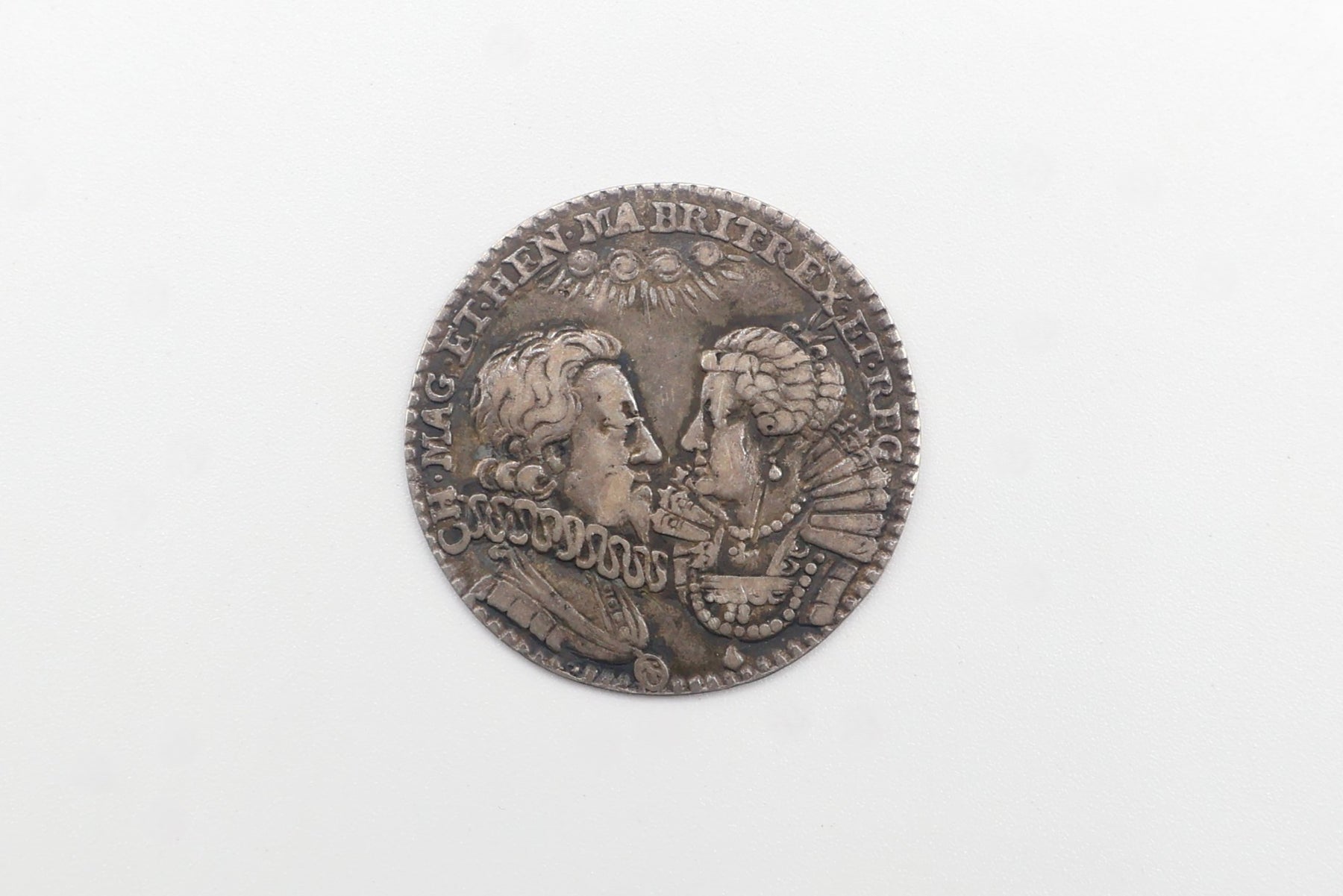
Silver confetti
[Henriette Marie de Bourbon, princess of France and Charles I, British king, Paris wedding]: Silver medal by Pierre Magnier struck to celebrate the couple’s wedding at the cathedral of Notre Dame, Paris, 1/11 May 1625. Busts of bride and groom facing with celestial rays above and motto CH[arolus] MAG[nus] ET HEN[rietta] MA[ria] BRIT[anniae] REX ET REG[ina] (Charles the great and Henriette Marie, king and queen of Britain). To other side, Cupid holding roses (of England) and lilies (of France), motto FUNDIT AMOR LILIA MIXTA ROSIS (love pours forth lilies mixed with roses) and date 1625.
A wonderful piece of silver ephemera, a medal that was inspected and found to carry the same imagery and motto as ours was reported by an attendee as “flung about” at the royal wedding in Paris between princess Henriette Marie, daughter of Henri IV of France, and king Charles I in May 1625 (Mead). The very slight weight of our medal makes the account very plausible - they appear designed for flinging, because you probably would not be hurt if hit by one. The custom of throwing medals is later recorded at the coronation of George IV in London, 1821, where “the Treasurer of his Majesty’s Household threw about the Medals of the Coronation” (Gentleman’s Magazine).

The medal’s sculptor Pierre Magnier, a native of Beauvais who settled in Paris, used a design incorporating the French lily and the English rose, which both frequently appear in the publicity produced for the wedding. The medal has a motto inspired by a line of Virgil’s Aeneid (XII.68), aut mixta rubent ubi lilia multa alba rosa (or white lilies blush when mingled with many a rose (tr. H.R. Fairclough)). Although the festivities were still lavish, the king of England did not actually attend this first wedding, which was followed by one in England. He was instead represented here in proxy by his cousin the Duc de Chevreuse.

Physical Description
Silver medal, diameter 23 mm., darkened and scratched.
Bibliography:
Benezit Dictionary of Artists online, entry for ‘Magnier, Pierre’, published online 31 October 2011 (accessed 8 September 2024).
Canova-Green, Marie-Claude, ‘Love, politics and religion, Henrietta Maria’s progress through France and the entry into Amiens’, in Canova-Green and Wolfson, Sara J., eds., The wedding of Charles I and Henrietta Maria, 1625, celebrations and controversy (Turnhout, 2020), 105-129.
Urban, Sylvanus, gent., The Gentleman’s Magazine: And Historical Chronicle. From July to December, 1821. Volume XCI. (Being the Fourteenth of a New Series). Part the Second. (London, 1821).
Virgil. Eclogues. Georgics. Aeneid: Books 1-6. Tr. H. Ruston Fairclough, rev. G.P. Goold. Loeb Classical Library 63 (Cambridge, MA, 1916).
Wedgbury, Daphne M., An edition of the letters (1621-1625) of the Reverend Joseph Mead to Sir Martin Stuteville of Suffolk in BL MS Harleian 389 (PhD dissertation, Leicester 1991).
